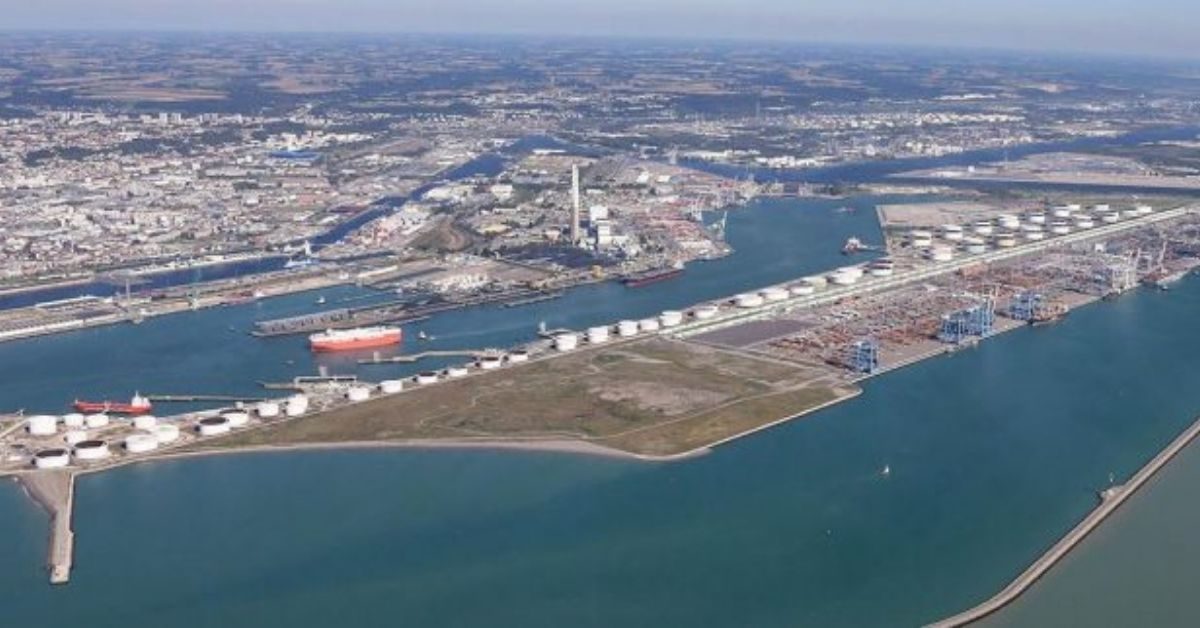A merger year and one with a strong recovery in activity: 2021 was an unprecedented year for HAROPA PORT, registering growth in maritime traffic of 12% – the Northern Range’s strongest rate – surpassing three million TEU for the first time and enhancing its attractiveness for logistics and industrial operations. In order to address its challenges, the port complex will be applying an exceptional level of investment in 2022 – €256m – of which an increasing share will be allocated to the energy transition.
Since the official merger in June 2021, HAROPA PORT has finalised its system of governance, adopted a tariff policy shared across all three ports and defined its first investment programme, whose scale is unprecedented; alongside this, its strategic project is currently going through the public consultation process.
“The good results announced by HAROPA PORT in this first year after the merger confirm the relevance of the model which became official on June 1st. Recent announcements by various partners and the extent of their investments underline the fact that the port complex now has the critical size and the right working methods to make sustained improvements to the port’s competitiveness and results. HAROPA PORT is thus confirming its position as the leading French port and consolidating its ranking among Northern European ports.”
– Daniel Havis, Chair, HAROPA PORT Supervisory Board
Maritime traffic: up by 12%
In 2021, maritime traffic registered an increase of 12%, to 84Mt, boosted by a rise in containerised goods flows and liquid bulk:
- For the first time in their history, the Seine Axis ports broke through the symbolic barrier of 3m TEU (achieving 3.07m TEU), with growth of 28%.
Inland traffic saw a major increase of 15% while transhipments expanded spectacularly (79%), establishing a new record at 843,000 TEU. - Liquid bulk ended the year up 6% (39Mt), buoyed by crude oil traffic, which increased by 16% (to 15.4Mt).
- Dry bulk fell back by 4% (at 14Mt) compared with 2020, a year that featured an exceptional cereals campaign. Cereals registered a fall of 13% (7.6Mt) but this figure is 5% higher than the 2015-2019 five-year average (7.3Mt). Imports of aggregates progressed by 25.5%, underpinned by the many construction sites along the Seine Axis.
- Ro-ro progressed by 14% (294,000 vehicles), returning to a level close to pre-pandemic figures.
- A new weekly freight service, a direct consequence of Brexit, was opened between Le Havre and Ireland.
- Cruises ended the year on a positive note with 49 port calls and 45,500 passengers (+100%).
River traffic increased by 4% in the Greater Paris area, supported by construction industry activity. Modal share remained unchanged at 12%: HAROPA PORT has defined the development of multimodality as a core priority.
Arrival of new industrial and logistics operations: a strong dynamic
In 2021, numerous prospective industrial and logistics customers of the port entered bids in response to calls for proposals issued by the three ports (multi-energy service stations, buildings 1 & 2 at Austerlitz port, a 52-hectare industrial site in Rouen, among others). In 2022, this very robust commercial dynamic will be maintained with the issuance of further calls for proposals: in Le Havre, the multibulk terminal, logistics parks PLPN 1/PLPN 2 and the Grand canal site; in Rouen, RVSL Upstream (Rouen Vallée de Seine Logistique / Rouen Seine Valley Logistics Park); development of plots at Gennevilliers (0.7 hectares) and Bonneuil (2.7 hectares).
In 2021, investment by private-sector actors progressed by over €50m (€350m vs. €246m in 2020), and will rise further to €550m in 2022, reflecting the attractiveness of HAROPA PORT and the confidence felt by investors.
Investment: €256m to address the challenges of “sustainable” development
Although 2021 was an exceptional year for investment for HAROPA PORT (€197m), it is nevertheless preparing to address a number of major challenges in 2022: ensuring that its high level of activity is maintained over the long term, continuing its development in the direction of a new and sustainable business model, and supporting the energy transition.
Investment in 2022 is commensurate with these ambitious goals, and is provisionally budgeted at €256m (between 2015 and 2019, the annual average was €95m); 16% of investment is allocated to supporting the energy transition, compared with 11.8% in 2021, making HAROPA PORT France’s leading port for the energy transition (quayside electrification, electricity service points, carbon capture being notable examples). Development of port capacity and multimodality also benefit from high levels of investment (notably PSMO, development and modernisation of the Radicatel terminal, Port 2000 extension).
“In the current unprecedented global economic context, HAROPA PORT’s overall results in 2021 have turned out to be positive, with one historic record and some very good results in a range of sectors. The confidence felt by private-sector industrial and logistics investors, shipowners and stevedores is a sure sign of the future. In this connection, the project conducted by T-I-L at Le Havre’s terminals is particularly promising. However, we are aware of the scale of the task ahead in a context in which there is an unavoidable need to transform ports’ business models, historically based on recipes linked to fossil fuels. This transformation must be conducted with a combination of ecological transition and competitive performance, and that is our challenge.”
– Stéphane Raison, CEO, Chair of HAROPA PORT Management Board






